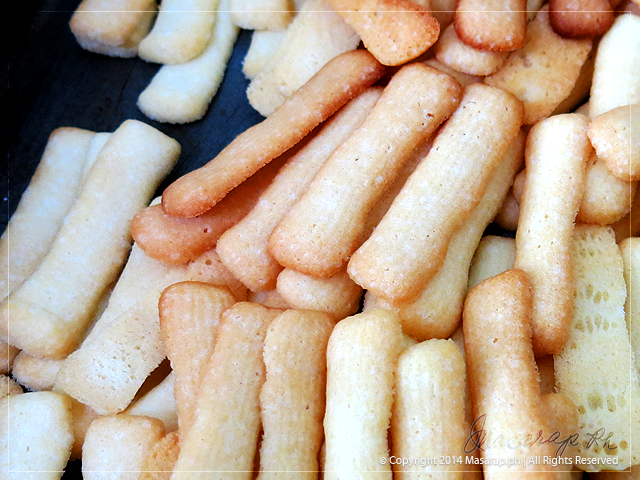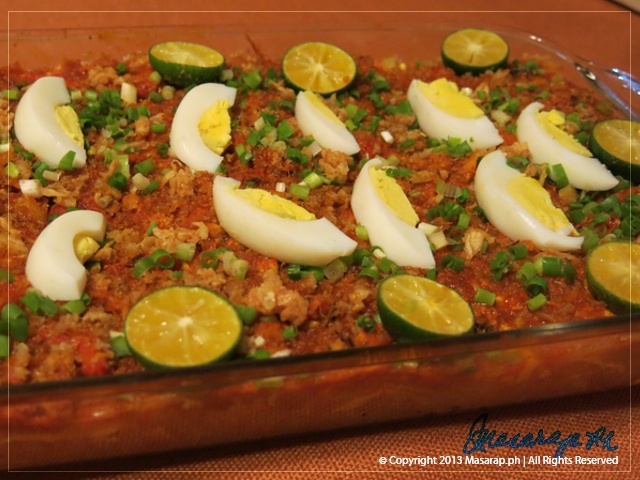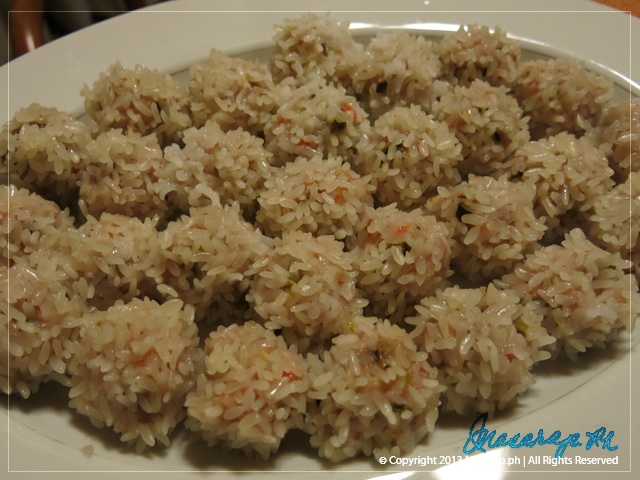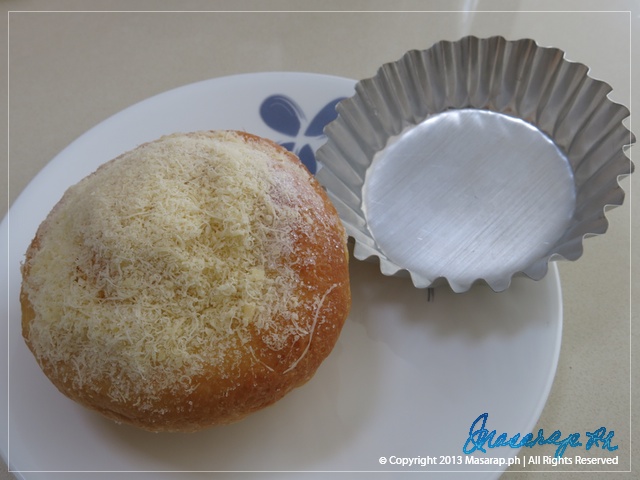Most specialized bake shops in the Philippines carry this delicate cookie. It is a Spanish cookie but since we were ‘once upon a time’ a Spanish colony, this must have rubbed off on us. It’s supposed to be shaped like a cat’s tongue but other bake shops have shaped them into thin discs. The secret of this cookie is the butter that one uses. Use the best butter that is available so that the flavor comes out and it’s good to the last crumb. Lenguas de Gato are a delicate butter cookies; an old fashioned afternoon delight. Memories of my grandmother, Natividad ‘Naty’ Lichauco de Leon, and her afternoon mahjong games comes to mind. Coming home from school, I would find her with her friends scrambling the mahjong tiles on the gaming table, and I would sit beside her and try to figure the game out. I never learned to play this Chinese tile game, but memories of Mama Naty’s afternoon delight linger in my mind. Ingredients: 1 1/2 cups (335 grams) butter – cut into cubes 1/2 cup (115 grams) margarine – cut into cubes 2 cups (400 grams) sugar 6 egg whites (3/4 cup) 2 tablespoons evaporated milk or powdered milk 2 teaspoons vanilla extract 3 1/2 cups (490 grams) all purpose flour 1 cup finely chopped cashew nuts (optional or for another type) Pre-heat oven to 350ºF or 180ºC Baking cookie sheets lined with baking paper Procedure: In the mixing bowl of an electric beater, using the paddle of mixer, slowly cream the butter and margarine until well blended. Add the sugar, 1/4 cup at a time, alternately with egg whites, beating well after each addition. Do not hurry; it must be well blended before adding sugar or egg white. Blend in the vanilla and the milk; blend well. At the slowest speed of the mixer, mix in the flour, 1/2 cup at a time. Mixing well before adding the next 1/2 cup. Add nuts if desired. Fill a medium sized pastry bag, fitted with a 1/4-inch round tip, half full of batter. Press 3-inch strips of dough, one inch apart on lined cookie sheets. Bake 5 to 10 minutes or until lightly browned around the edges. Place on cooling rack and let cool for 5 minutes and with metal spatula, remove from sheet and continue to cool in another cookie sheet. When totally cool, store in an air tight...
Duman is the gold edition of malagkit rice (sticky rice). The best duman is grown in Santa Rita, Pampanga. Planted during the rainy season, it waits for the cold weather of November and December before it is harvested. Duman is actually immature sticky rice. The rice is harvested while is it still immature and green. It is hand harvested; hand roasted; hand pounded; hand sifted, and therefore costs a mint! The cost of one ‘pati’ (about 3 kilos) of this young rice is equivalent to a fifty kilo sack of ordinary rice. Whoever thought of this process must have been a real gourmand and a glutton for work. One can eat the duman, raw, just as it is. The usual way one eats duman with is steaming hot chocolate. In a cup of hot chocolate, one sprinkles about 1/2 cup of the duman into the chocolate and then slowly spoons it into the salivating mouth. The other method of eating duman is to get newly harvest palm (sasa) juice that has been warmed and the duman sprinkled on it too. The reason that duman is so expensive is that only a few know how to do this and that they can only harvest it in its prime, which is only a few weeks. There is also available the ‘over the period’ kind but it’s already the stage when the rice begins to harden and cannot be eaten raw. There is also the fake kind, people color the ‘pinipig’ (as it’s also known) green. The true color of duman is a pale yellow green. So once a year, we were able to taste this precious sticky rice. There were times when I had more than I could eat and that is when I started to experiment with this. I know very well that you will not be able to do this; the basic ingredient is prohibitive and only comes out once a year for a few weeks. But then I wanted Filipinos to know that such a dish exists and it can only be found in the Philippines. During my catering days, I would serve this and got requests to serve it again and had to turn them down because of it’s unavailability. I would just say, try again next year. It is very easy to make but hard to find. There is a saving grace in all this, one can freeze the duman even for a year. Wrap the duman in wilted banana leaves; then wrap with foil; wrap with Manila paper; then place in a resealable plastic bag; then freeze. The secret is keeping the duman moisture free. If you want to eat it raw, take the amount...
People who are not used to the smell and taste of this sauce, find it very offensive and why not! it smells like rotten, putrefied garbage. But to those that know how this sauce tastes like and is served, find it heavenly. It’s all in the mind! Once I served it to very good friend – Denise Bellini (an Australian), and he found it tasted like cheese and liked it. In Pampanga, where this is a common sauce for fried or grilled or roasted fish, and for steamed vegetables (eggplant, okra, ampalaya (bitter melon), sitao (long pole bean)) or fresh mustard leaves, the meal is incomplete without this sauce. There is also a version where fish is used instead of shrimps, maybe you could try that out too. Usually this is made in large quantities because it is used frequently. I have made this Sydney upon the request of my Filipino ladies group and our home’s architect – Ton Jaucian. It just takes a bit longer to ferment due to the cool weather of Sydney. Fermenting Ingredients: 5 cups cooked rice – boil rice with 10 cups of water till cooked; you come up with a soft kind of cooked rice; cool rice thoroughly 500 grams very fresh shrimps – alive if possible, the 2-inch long size; do not peel. In Sydney where you do not find shrimps that are alive, I use small, fresh prawns that are peeled and sliced in half – lengthwise. If you want to use fish, I use filleted fish and slice into 1/2-inch cubes or in small strips. In the Philippines, you can use whole small fresh gurami or tilapia, de-scale, debone and cut into finger sized strips. Do not use head of tilapia. Some even use the mud fish for this. 250 grams young, fresh bamboo shoots – sliced very thinly and blanched for 5 minutes in hot water and drain well and cool down 1/2 cup salt Procedure: Get a well washed, dry, 1 to 2 gallon glass jar. Rinse the shrimps/fish with water and drain well. Pat dry to ensure dryness. In a large bowl, place shrimps and sprinkle with the salt, and mix thoroughly. Using rubber gloves, spread cool rice in a large bowl. Mix the bamboo shoots with the shrimps. Mix the shrimp/bamboo with rice using gloved hands. Put the mixture inside the jar, in layers, packing well each layer. You want to avoid air pockets in the jar. Cover the mouth of the jar with a clean sheet of plastic and close with lid. Some times it is hard to find glass gallon jars and I use a glass bowl that has a lid. Set aside in...
Beaches and summers go together during vacation time. My children and I spend many memorable holy weeks at the Bacnotan Vacation house in La Union. I had to rack my brains to come up with different ways to cook fish which was fresh and abundant in this area. If you enjoy going to the beach and buying freshly caught fish directly from the fishermen, you can make this very simple dish and actually feed the whole gang. The fish must be from the sea, and have thick scales. The fish I used was the El Dorado (it was about 2 kilos plus and 24-inches long). Straight from the fishing banca (boat), the El Dorado shimmered like gold – it had a golden stripe on its back. But another time, when I bought it from the fish market, the gold seemed to have faded away. So try it straight from the sea, it is much better. There is no need to scale or gut the fish. Just rinse the whole fish with water and pat dry. To cook the fish in the rough without an oven (remember you’re on holidays), you’ll need some stones or 3 hollow cement blocks, a piece of G.I. sheet, and about 2 gallons (32 cups) of salt. Build a makeshift barbecue pit by placing the G.I. sheet (flat type) over the stones or hollow blocks. Spread evenly, around 16 cups of salt on G.I sheet, to follow the contour of the fish. Lay the fish firmly in the center of the salt, then with the other 16 cups of salt, cover the entire fish with 1/2-inch to 1 inch thick crust of salt. Start a charcoal fire under the G.I sheet. Cook the fish until the salt is firm enough to knock on. You can use a wooden spoon to tap on the salt and when the sound is hollow, the fish is cooked. To oven-bake the fish, set the oven temperature to 350ºF or 180ºC and bake the fish till the crust of salt is firm enough to knock on. The fish retains its natural flavour and cooks in its own juice. The salt does not penetrate the fish. Carefully remove the salt crust with a knife and turner. Do not cut the fish open until all the salt has been removed. When all the salt has been removed, use a knife and fork to remove the skin. Serve the fish with garlic fried rice and any of the following sauces for dipping. Soy Sauce Dip: Mix together the following: 1 cup soy sauce 1/4 cup white vinegar 2 tablespoons calamansi juice or lemon juice 1 tablespoon grated ginger 1 tablespoon finely crushed garlic...
This the traditional Adobong Pusit which I avoided like the plague when I was young till I learned how to make it in a different style. Now I love ‘calamari’ aka squid specially Paella Negra. You see, I am not fond of sour foods in general. When I learned how to temper the sourness in foods, then I began to like and appreciate sour food. Ingredients: To cook the squids: 500 grams fresh squid (pusit) – small sized ones 1 whole bulb of garlic – crushed 1/4 cup white vinegar (coconut or palm) 2 tablespoons calamansi juice or lemon juice 1/4 cup water 2 teaspoons salt To stew the squids: 2 tablespoons cooking oil 1/2 cup squid broth 1 head garlic – crushed 1/2 cup chopped onions 1/2 cup fresh tomato – chopped 1 lady finger chili (siling mahaba) Procedure: Detach the head of squid from the body. In the tube part, clean the squid by removing the plastic looking spine; be careful with the ink sac that is found at the bottom part of the head. Gently remove the sac, which looks like silver beads and place in a tiny bowl; set aside. Remove any dead fish or other sea creatures found (you’ll be surprised to see what you find – like baby clams, baby crabs and the like) in the the cavity. Do not remove the fat, which looks like gelatine and do not remove the skin of the squid. Rinse with water, drain, cut into 1-inch circles and set aside. With the tentacles, remove the teeth, which looks like a small tube (it’s hard). If the tentacles are small, leave whole, if its big, slice lengthwise in half. Rinse and drain. Set aside together with the rings. In a non-corrosive sauce pan (glass, clay, non-stick, or ceramic), over low fire, put in the vinegar, water, calamansi juice, garlic and salt. Bring the mixture to a slow simmer then add the squid rings and tentacles and simmer for about 15 minutes. Remove from fire, drain out the squid, save liquid and set aside. Rinse non-corrosive sauce pan and place over low fire. Sauce garlic and onions in oil till the garlic is light golden tan. Add the saved ink sacs, and using the back side of wooden spoon, crush the ink sacs. Simmer for 5 minutes. Add the tomatoes and continue to simmer for 15 minutes. Add the broth from the simmered squid and the siling mahaba; simmer for another 5 minutes. Add the squid rings and tentacles and simmer for another 5 minutes. Taste and adjust by adding salt, pepper or patis. Serve with hot...
This Salsa is so delicious on rice, pasta and bread. I got the idea from Salsa Amaya but changed things a sit to suit my blood type AB diet. I also find it a ‘comfort’ food. With my hectic schedule in Manila, sometimes I don’t feel like eating a full meal. I ask my ‘yaya’ Carol Laoreno to cook me some fragrant Jasmine rice and then I mix the Salsa Ana on top of the steaming rice and just savor the homely flavor of the salsa. That’s what I call ‘comfort food.’ This recipe will make  three 300 gram-bottles. Ingredients: 2 tablespoons (25 grams) finely minced garlic 60 grams deboned salted fish (tuyo na Lapad) 2 tablespoons Mirin – cooking Sake 400 grams canned button mushroom – sliced fine 70 grams sun dried tomatoes or 100 grams sun dried tomato in oil – slice thinly julienne 150 grams green pitted olives – sliced fine in round shape 3 cups extra virgin olive oil 1/2 teaspoon salt 1/2 teaspoon pepper Procedure: Sprinkle the deboned tuyo with 2 tablespoons of Mirin and toss. Set aside. In a non stick, heavy bottom cooking pan, pour in olive oil and warm over very low fire. Place the tuyo in the pan and cook the tuyo in the low fire for 20 minutes. Then add in the garlic and continue to cook for 5 minutes; stirring every once in a while. Then add in the dried tomatoes and simmer for another 10 minutes, stirring occasionally. Then add in the olives and simmer for another 10 minutes, stirring occasionally. Then add in the mushrooms and simmer for another 40 minutes, stirring occasionally. Season with salt and pepper. Cool and bottle. Serve with steaming hot rice. Notes: The other way to use this sauce is as sauce for pasta. Tuyo is our version of anchovy sans the oil. I use either spaghettini or twist pasta. Salsa Ana is also good served with crackers or bread, rolls or French bread (toasted or...
The most popular pancit that we serve and sell is called Pancit Luglug. It’s not only popular with us, but in most Filipino restaurants, this is a best seller. Because thin rice noodles are used, it’s light and bright! BUT, it’s very time consuming to make because it has so many ingredients, thus the term ‘palabok’ (flowery or flamboyant). But because it is so delicious,  every morsel and mouthful is well worth in making  the effort. Luglug refers to the technique used in cooking the thin rice noodles; one just quickly dips it in boiling broth for 3 seconds. The good thing with Pancit Luglug, one can also eat it cold and it will still taste good. Then, there are those like my daughter, who likes to eat this at room temperature. Topping: 1/4 cup cooking oil 2 tablespoons finely minced garlic 1/2 cup finely chopped onions 1 tablespoon anato liquid – to extract anato liquid, get 1 tablespoon of anato (atswete) seeds. Mix anato with 1/2 teaspoon liquid lye. Leave for 1 hour. Pour 1/2 cup of boiling water and mix well. Leave for 30 minutes; strain out the seeds and use liquid. Use the balance for the sauce. In the Philippine market, one can get anato seeds that have lye mixed with it. In other countries, one can find anato/atswete powder (follow instructions on package) 250 grams shrimps – steam to cook, peel and cube – save shrimp heads, set aside 250 grams blue swimmer crabs (alimasag) – steam to cook and peel to get meat (you can also use the canned or frozen variety) 1/4 kilo pork belly – boil till tender; slice into 1/4-inch thick strips 1 teaspoon salt 1/4 teaspoon freshly ground black pepper Topping Preparation In a medium sized frying pan, over low fire, pour in cooking oil and saute the garlic till a light golden tan. Remove half of the sauteed garlic and place over kitchen paper towel to drain. This is to be used for garnishing. Add the onions and continue to saute till the onions are translucent. Pour in the anato/atswete liquid and simmer for 5 minutes. Add shrimps, crab and pork and simmer for another 5 minutes. Season with salt and pepper. Set aside. Sauce Ingredients: 1 tablespoon cooking oil 1 teaspoon finely crushed garlic 1/4 cup finely chopped onions 2 tablespoons atswete liquid 1 tablespoon fish sauce (patis) 1 teaspoon salt 1/2 teaspoon freshly ground black pepper 3 cups chicken broth 1/2 cup shrimp head juice – shrimp heads – using a mortar and pestle, pound shrimp heads and place in a small sauce pan; add 3/4 cup water to pan and simmer for 10 minutes then strain...
The Philippines has been greatly influenced by Chinese cooking since the time of Chinese trading with the Philippines. In fact many Filipinos are partly Chinese; me, case in point is partly Chinese. Siomai or steamed pork dumpling is Chinese in origin. This recipe is Chinese in origin with a slight twist; the exchange of rice in place of wonton wrapper. The reason for this exchange is that sometimes the wonton wrapper gets soggy and looks wilted; whereas the rice makes the Siomai look always fresh. My first encounter with ‘siomai’ was when I was a grade schooler at the Assumption Convent in Manila. The nuns sold these dumplings bought from the famous “Ma Mon Luk†restaurant during the school fairs. Siomai Ingredients: 500 grams ground pork 250 grams shrimps – steamed, peeled and cut into tiny cubes 1/2 cup carrots – peeled, cut into tiny cubes 1/8-inch size 3/4 cup water chestnuts or singkamas – cut into tiny cubes (water chestnuts preferred) 1/4 cup spring onions – finely chopped 1/2 cup pork luncheon meat (Spam) or ham – cut into tiny cubes 3 pieces dried black Chinese mushrooms – soaked in hot water till soft, drained, stems removed, and cut into tiny pieces or 1/2 cup finely chopped fresh Shitake mushrooms 1 teaspoon finely grated ginger 1 tablespoon seat salt 1 tablespoon sesame oil 3 tablespoons oyster sauce 2 tablespoons soy sauce 3 egg whites 1 teaspoon freshly ground black pepper 1 cup cornstarch (corn flour) 1 cup rice – soaked in water for 1 hour and drained or 50 pieces wonton wrappers 1/2 cup frozen green peas (optional for decoration) Siomai Procedure: Wear plastic gloves and, with hands, combine all the ingredients except rice or wrapper and peas, until well blended. With hands, shape mixture into 1 1/2-inch balls and roll in rice until the whole ball is covered with rice. Set aside on a tray until all the balls have been rolled. Place a pea on top of each ball. Arrange the dumplings in single layer in an oiled basket steamer or line steamer basket with ‘katcha’. Have two inches of water in the bottom layer of steamer and bring to a boil. Place the steamer basket on top and steam dumplings for 20 to 30 minutes or until the dumplings and rice are cooked. Serve with the dipping sauce. Dipping Sauce Ingredients: 1/2 cup soy sauce 1 tablespoon calamansi or lemon juice 1/2 teaspoon hot sauce (Tabasco or Chili sauce) 1/4 teaspoon sesame oil 1 tablespoon sugar Dipping Sauce Procedure: Mix together in a small bowl and use as dipping sauce for Siomai. Notes: Wrap the cover of the steamer with ‘katcha’ to prevent the dumplings...
The Ensaymada is in many ways like the French Brioche but Filipino ingenuity makes it just so Pinoy – that sugar and grated Edam cheese (keso de bola) on top and it’s snail-like shape. I always say, ‘when I was a young child’ well, this is one of those again. I learned how to make Ensaymada from my mother and it was a whole day affair and it still is, but with the help of my Kitchen Aid, I do not have to shed so much perspiration to make it; the machine does that now. In the good old days, incorporating the butter was like preparing for a boxing match. Your hurled the dough against the marble slab to make sure the butter was taken in by the dough and this took a good one hour. Now, all you have to do is knead the dough by hand for the last 10 to 15 minutes just to refine it. I remember when I first made this on my own; they were as hard as baseball balls and bounced off the floor where I threw them in disgust! That’s many moons ago and this particular recipe is my very own from the hundreds of experiments that I have done. It’s easy to just buy it from your favorite bake shop but there’s nothing like doing it on your own when you have a whole day to spare. It’s very gratifying! Preheat oven to 300ºF or 160ºC fan forced Baking time is 15 minutes Makes 16 pieces of 100 grams each roll Grease pans with shortening Ingredients: Sponge stage: 2 tablespoons instant dry yeast 1/4 cup honey 1 cup warm milk or 1/2 cup warm water and 1/2 cup evaporated milk 100 grams cake flour Second stage: 3/4 cup (150 grams) sugar 1/2 cup egg yolks 300 grams cake flour 1 teaspoon salt Third stage: 1/2 cup whole eggs 400 grams bread flour 2/3 cup (165 grams) butter and 1/3 cup (85 grams) dripping (rendered fat from pork and beef) or just buy from the supermarket – both at room temperature Topping: 1 cup grated Edam cheese or Pecorino sprinkle with sugar Procedure: Sponge stage: In the mixing bowl of your Kitchen Aid or mixer, place 100 grams cake flour and yeast; mix. Pour in honey and warmed milk. Put the paddle attachment of mixer and mix on slow speed for 5 minutes. Stop and let it rest, covered with damp cloth, for 15 minutes. Second stage: Turn on the mixer at low speed and pour in the 1/2 cup egg yolks, one at a time, mixing well after each addition. Mix in the sugar and mix well. Add salt to...
We also have our very own style of chutney. It is served with Bringhe and other curry dishes. The difference in the Indian style chutney is the mango itself and no other spices. With the Filipino chutney, manibalang (half ripe), carabao mangoes are used and only salt and sugar are added to it. I learned how to make this from our assistant cook, Helen Manao. Helen was a very diligent cook. She learned how to read and add from us. I would see her sweating it out trying to add up the market list and then I learned that she didn’t know how to read and do maths. Over the years, with lots of effort and sweat, she finally did learn and even became a business woman on her own right. She has gone to heaven and this recipe is in memory of her. Ingredients: 4 kilos yellow-green half-ripe (manibalang) carabao mangoes – dried strips must come up to 500 grams 1 piece yellow (ripe) carabao mango – peel off skin with potato peeler and coarsely grate meat into a glass bowl or plate; set aside 2 1/2 cups (500 grams) white sugar 1 1/2 cups water 4 teaspoons sea salt coarse Procedure: Peel off the skin from manibalang yellow-green mangoes with a potato peeler. Slice the mangoes with potato peeler too. Place the sliced mangoes in a glass or stainless steel bowl. Sprinkle the salt all over the mangoes and mix well. Leave in the salt for 2 hours, mixing occasionally. Drain salt water well from the mangoes and place in a bilao (native bamboo tray) or baking tray. Spread out evenly on bilao and sun dry. It may take a few hours to two days, depending on the sun’s heat to dry. It must not be too dry nor still soggy. The mango strips must still have some moisture left. In a medium sized stainless steel or fire-proof cooking sauce pan, over medium-low heat, place the grated ripe mango, water and sugar. Bring the mixture to a slow boil. About 5 minutes. Add the semi-dried yellow-green mango strips and continue cooking for another 5 minutes. Turn down the flame to low simmer and stir constantly until the candy thermometer registers 200ºF (90ºC). Turn off fire and bottle immediately. Leave off cover till cool and then cap. Serve as an accompaniment to Bringhe or any curried...





Recent Comments